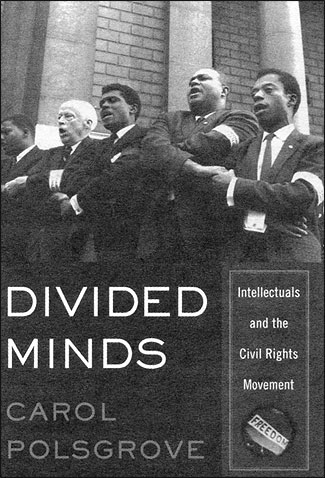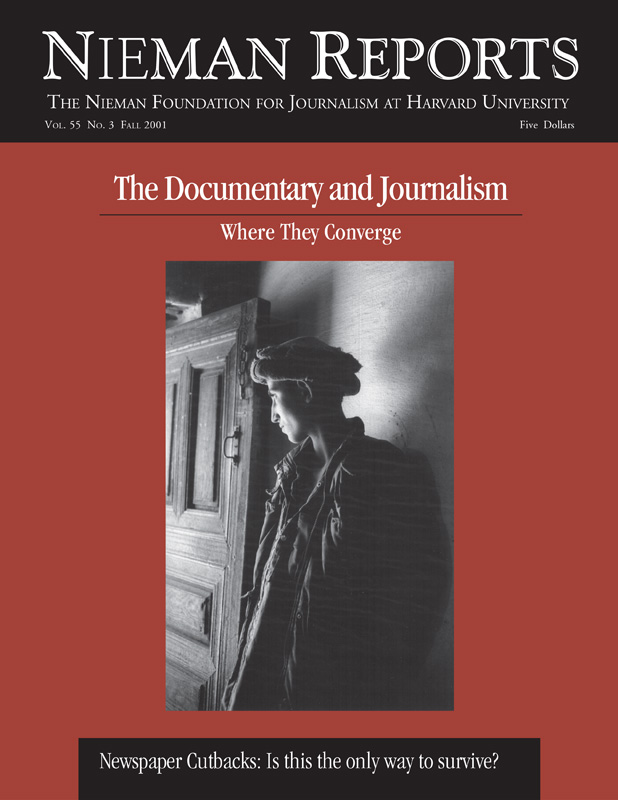
Not long after the 1954 Brown v. Board of Education decision opened the door to racial change in America, Georgia author Lillian Smith received what seemed to her a peculiar request. The Antioch Review, a little literary magazine, had sent along to her a piece the editor proposed to run and asked if she would respond to it. The article, by a New York-born, white Alabama professor, was little more than an exercise in contempt.
“[M]ost Alabama Negroes,” Norman A. Brittin wrote, “live in crowded huts and shanties, they are ignorant, they are dirty, they are frequently drunken and immoral, their reading matter is trashy or nonexistent, their speech is an ungrammatical patois.” The article then went downhill: “By and large, Alabama Negroes are still primitives.”
Smith, one of several white southerners invited to respond to these views in the same issue, was appalled. This was the stuff of demagoguery. Publishing it only encouraged it. Refusing the invitation, she asked the editors, “What has happened to the intellectual life of Antioch?”
Whatever had happened at the Antioch Review had happened at other magazines. In a November 1956 Atlantic Monthly article (identified by an editorial note as “the fundamental case for the white South”), Herbert Ravenel Sass maintained that the United States was “overwhelmingly a pure white nation” and ought to stay that way. Desegregation of the schools would inevitably lead to “widespread racial amalgamation.” To balance the article, the Atlantic published the words of white historian Oscar Handlin who, curiously, accepted Sass’s premise—the undesirability of social mixing. But he argued that school desegregation would not necessarily lead to it.
In January 1956, Harper’s, generally a liberal magazine, ran an article in which a South Carolina newspaper editor, Thomas R. Waring, attributed an array of faults to African Americans—venereal disease, illegitimacy, crime, intellectual backwardness. Harper’s prefaced the article with a disclaimer: The editors did not agree with Waring, but published the essay in the interest of “dialogue.”
In a book titled “The Cold Rebellion: The South’s Oligarchy in Revolt,” published just a few years later in 1962, African-American journalist Lewis W. Jones would offer Waring’s words as an example of the many such articles that placed African Americans “in an unfavorable light” at this bend of the road. At least, he said, Harper’s editors “had taken pains to point out the author’s errors of fact and logic. Most editors do not undertake to comment on the half-truths and innuendo with which these articles are often crowded.”
At a time when national magazines might well have been leading the way to change, they instead opened their pages to those who resisted it. When southern white novelist William Faulkner wanted to ask the North to “go slow” in pressing desegregation on the South, he turned to Life, and Life ran his plea in the spring of 1956. But when Lillian Smith cabled Life and asked for space to respond, the magazine turned her down.
It is not hard to see why Life put its pages at Faulkner’s disposal. He was, after all, a Nobel Prize winner, highly respected by the literary establishment. At the same time, Lillian Smith, too, had a right to be heard. Not as gifted a novelist as Faulkner, she had nevertheless written two bestselling books about race in the South, “Strange Fruit” and “Killers of the Dream.” Both books had reached a wide audience.
Yet Smith, clear about her own support for desegregation, watched while Faulkner and southern newspaper editors Ralph McGill and Hodding Carter, Jr., published their cautious views in magazines with circulations in the millions. Before the Brown decision, neither McGill, editor of the Atlanta Constitution, nor Carter, editor of a smaller paper in Greenville, Mississippi, had favored desegregation outright. Although they had spoken against segregation’s worst abuses, they had not spoken against segregation itself. Now, since change must come, they spoke for change, but in good time. They, cautious and cautioning, and not Lillian Smith, were speaking for the white South in the big magazines.
Novelist Robert Penn Warren joined their moderate voices in a 1956 Life article that then appeared as a book, “Segregation.” Reviewing it, Lawrence Reddick, an African-American history professor at Alabama State College, wrote in The New Republic that Warren offered up no more than a polite version of the southern picture painted “in cruder colors in the extremist press of the Deep South: The mistakes of the North are emphasized; the weaknesses of the Negro are underscored; and, above all, there is the determination of Southern white folk, they say, that ‘nobody’s a gonna make us.’”
That, he said, was the substance of Warren’s closing remarks: that desegregation would only come when the white people themselves decided they couldn’t go on living with their divided minds. “This is the way it goes,” Reddick remarked with palpable bitterness. “Countless editors, scholars and men of letters, in and out of the South, who personally might shrink from killing an insect, give their sanction to the intransigence of the racists. Is it too much to say that there is a connection between the essays, editorials and novels of the literary neo-Confederates and the howling mob that blocks the path of little Negro children on the way to school integration?”
Reddick had put his finger on a shameful truth. For two years after the Brown decision, as the white resistance gained strength, white southern men, ambivalent or worse, had led the commentary on race in the national magazines. True, The New Republic let Reddick speak his piece and, before the Brown decision, Look magazine did try to get United Nations official Ralph Bunche, formerly a professor at Howard University, to write on segregation in the schools. The Nation did run commentary by African Americans involved in the NAACP and other political organizations. But the most powerful voices in the big circulation magazines were, as Lillian Smith observed, southern white gradualists.
When The New Republic finally let Smith have her say in 1957, she spoke of the “magnolia curtain” that had dropped down between the South and the North. She mocked the magazines’ approach to racial change: “[D]on’t let one intelligent white Southerner who opposes segregation speak. Keep them smothered….” As one who felt shunted aside, Smith fixed on the exclusion of desegregationists like herself, but the exclusion of African Americans constituted no less a political act. As “Invisible Man” author Ralph Ellison understood, rendering African Americans invisible was one way of disempowering them.
If whites did not notice the onesided nature of the dialogue, African Americans certainly did. In “Cold Rebellion,” published in England just a few years later, Lewis W. Jones observed that “Negroes are frequently unhappy in having their case presented by ‘moderates’ or ‘liberals’ whom they surely would not identify as being either moderate or liberal.”
Kenneth B. Clark, the social psychologist who had helped the NAACP Legal Defense Fund make its case for Brown, protested a 1954 Reader’s Digest article by Hodding Carter, questioning the editors’ judgment in selecting Carter as an authority. “While Mr. Carter might feel competent to speak in the name of ‘moderate’ white southerners, it is presumptuous, patronizing, and not justified by recent events for him to attempt to speak for Negroes.”
Why, at this important time, were the nation’s magazines—still the primary vehicle for serious national political discussion—so much more interested in southern whites’ discomfort than in the longstanding injustice suffered by African Americans? Why were they so little interested in what African Americans themselves had to say about what was happening?
Editors were, of course, journalists with their ears pricked for conflict, and whites were the ones providing conflict by resisting the Supreme Court. Nevertheless, there was something askew in the national media’s fixation on the white South’s response to Brown—and something more than askew in magazines’ publication of articles portraying African Americans as degraded and unworthy. It is hard to escape the predictable, dreary fact that white editors, in this challenging hour, were unable to think outside the terms of their own race. Enclosed in their white worlds, instead of leading the way to change, they settled in behind the lines.
Carol Polsgrove is the author of “Divided Minds: Intellectuals and the Civil Rights Movement,” published in May by W.W. Norton. A former Associated Press writer, she has been an editor at Mother Jones and The Progressive and has contributed to other national magazines. She is on the School of Journalism faculty at Indiana University, Bloomington.



